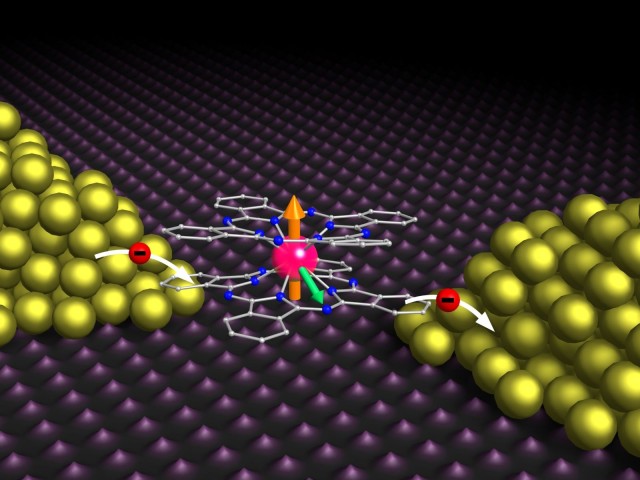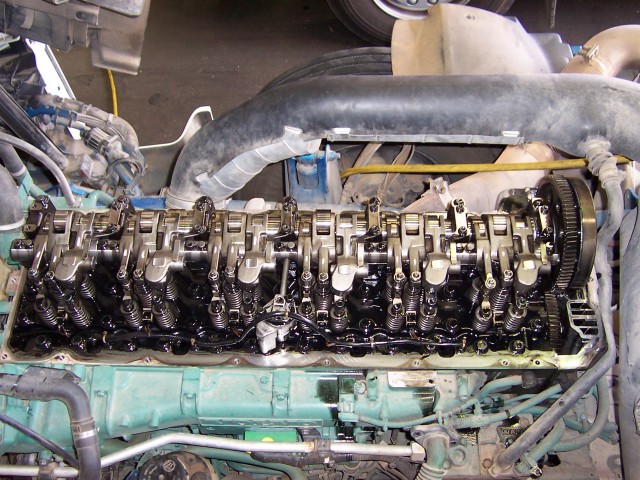
The terbium atom (red) is sandwiched between two organic molecules (grey and blue) to form a single-molecule magnet.
Spin is one of the intrinsic quantum properties of particles. The spin of electrons orbiting an atom has significant consequences, such as determining the magnetic properties of materials. Atomic nuclei also have spin, but that is harder to manipulate: it interacts less with other spins and nuclei are much more massive, so they aren’t as easily moved. However, those very properties could make nuclear spin a good option for for quantum computing, since the spin state of a nucleus is less subject to environmental influences that might alter its state. But reading out the nuclear spin state is notoriously difficult.
A new proof-of-principle experiment by Romain Vincent, Svetlana Klyatskaya, Mario Ruben, Wolfgang Werndorfer, and Franck Balestro measured the nuclear spin of a single atom. The nucleus belonged to a terbium (Tb) ion inside a larger molecule, which the researchers linked to a gold nanowire to construct a transistor-like device. They measured the four possible nuclear spin states, and observed them to be stable for tens of seconds—long enough to perform entanglement and other quantum-information processes.
Spin is integral to particles: all electrons (for example) have the same amount of spin. The spin quantum state is the relative orientation of the spin with respect to some other spin, or to an external magnetic field. Electrons are low mass particles and relatively lightly bound to atoms, so their spins are fairly easy to manipulate. As a result, the spins of atoms are typically determined by their electrons—including the magnetic properties. However, because electrons’ spins are subject to strong environmental influences, they are somewhat unreliable from a quantum information perspective. If you write information to an electron’s spin, it won’t stay written for long.
from Ars Technica







